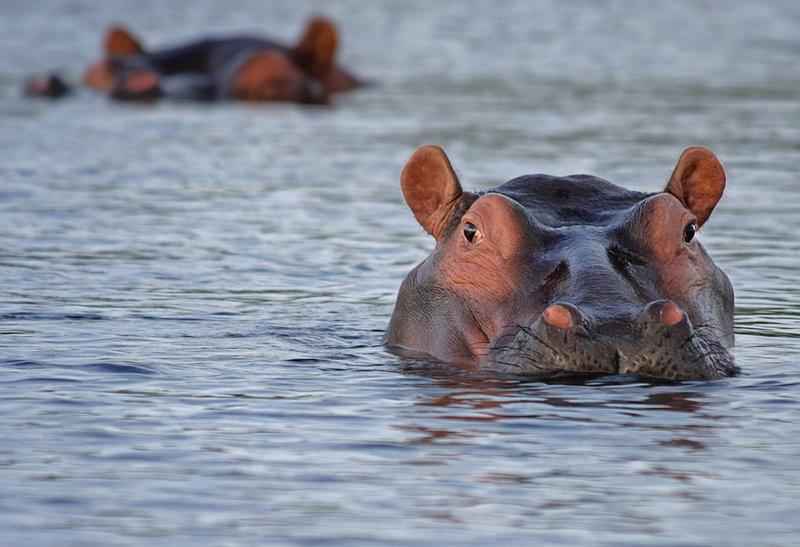SA has asked international anti-seal hunt organisations to immediately send seal rescue teams to Namibia to help save some of the thousands of seals dying at the coast.
“We want to prevent further untold incidents of widespread mass cruelty,” said Francois Hugo of Seal Alert, who last week alleged that the Ministry of Fisheries was falsifying seal population figures in order to justify higher culling quotas. Not only are the seal deaths raising the eyebrows of international animal rights groups, the sight of masses of dead and dying seals beached daily is becoming a disturbing and sickening sight for residents and visitors.Activists believe that the plight of Namibia’s Cape Fur seals is reaching critical proportions.In addition to seals starving to death – attributed mainly to overfishing – a quota of 85 000 nursing seal pups and 7 000 bulls will have been clubbed to death or shot dead when the seal-culling season draws to a close next month.Animal rights have dubbed Namibia’s seal cull “the cruellest sea hunt in the world”.No country in the world would allow their wildlife to die of starvation and ignore it, Seal Alert’s Hugo said.”But with bodies of dead seals littering the beaches daily, this atrocity is now wide open for all the public to see.”[Fisheries Permanent Secretary Nagula] Mbako’s claim that the pup population had increased 73 per cent since 1993 to 379 939 pups in 2006, was pure fabrication, Hugo alleged.It was in fact some 200 000 pups more than that stated by Fisheries Minister Abraham Iyambo in July, he added.Inflating and falsifying the seal pup population by more than 100 per cent, and to attribute the mass starvation to over-population was a complete travesty, and should not be allowed to go unnoticed.These statements reflected a direct threat to the future survival and conservation of this protected species, he charged.Hugo said the seal population had never recovered from the 1994 mass die-off from starvation, which was the seventh such event since 1988.He demanded that Namibia immediately announce an end to its sealing policy, as South Africa did in 1990.Reports of large numbers of seals dying along the Namibian coastline have raised additional world criticism, as three concessionaires continue with Namibia’s largest seal cull yet.The mass deaths from starvation are less than three months into Namibia’s sealing season due to end on November 15.Hugo attributed the mass starvation to overfishing and alleged mismanagement of Namibia’s fish resources.He also blames the culling process for creating an imbalance in the breeding colonies.* Donna Collins is a journalist based at the coast.Not only are the seal deaths raising the eyebrows of international animal rights groups, the sight of masses of dead and dying seals beached daily is becoming a disturbing and sickening sight for residents and visitors.Activists believe that the plight of Namibia’s Cape Fur seals is reaching critical proportions.In addition to seals starving to death – attributed mainly to overfishing – a quota of 85 000 nursing seal pups and 7 000 bulls will have been clubbed to death or shot dead when the seal-culling season draws to a close next month.Animal rights have dubbed Namibia’s seal cull “the cruellest sea hunt in the world”.No country in the world would allow their wildlife to die of starvation and ignore it, Seal Alert’s Hugo said.”But with bodies of dead seals littering the beaches daily, this atrocity is now wide open for all the public to see.”[Fisheries Permanent Secretary Nagula] Mbako’s claim that the pup population had increased 73 per cent since 1993 to 379 939 pups in 2006, was pure fabrication, Hugo alleged.It was in fact some 200 000 pups more than that stated by Fisheries Minister Abraham Iyambo in July, he added.Inflating and falsifying the seal pup population by more than 100 per cent, and to attribute the mass starvation to over-population was a complete travesty, and should not be allowed to go unnoticed. These statements reflected a direct threat to the future survival and conservation of this protected species, he charged.Hugo said the seal population had never recovered from the 1994 mass die-off from starvation, which was the seventh such event since 1988.He demanded that Namibia immediately announce an end to its sealing policy, as South Africa did in 1990.Reports of large numbers of seals dying along the Namibian coastline have raised additional world criticism, as three concessionaires continue with Namibia’s largest seal cull yet.The mass deaths from starvation are less than three months into Namibia’s sealing season due to end on November 15.Hugo attributed the mass starvation to overfishing and alleged mismanagement of Namibia’s fish resources.He also blames the culling process for creating an imbalance in the breeding colonies.* Donna Collins is a journalist based at the coast.
Stay informed with The Namibian – your source for credible journalism. Get in-depth reporting and opinions for
only N$85 a month. Invest in journalism, invest in democracy –
Subscribe Now!










